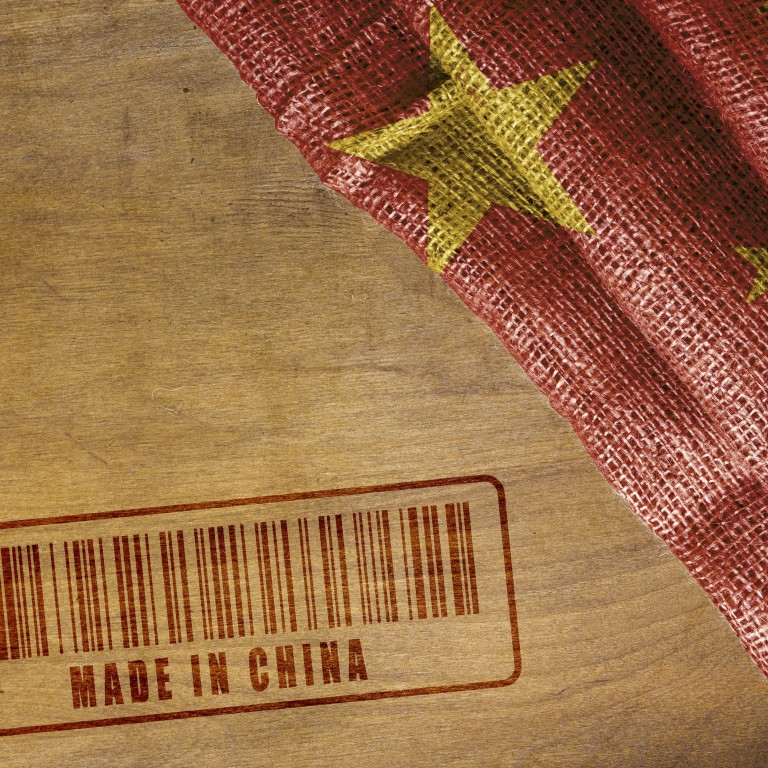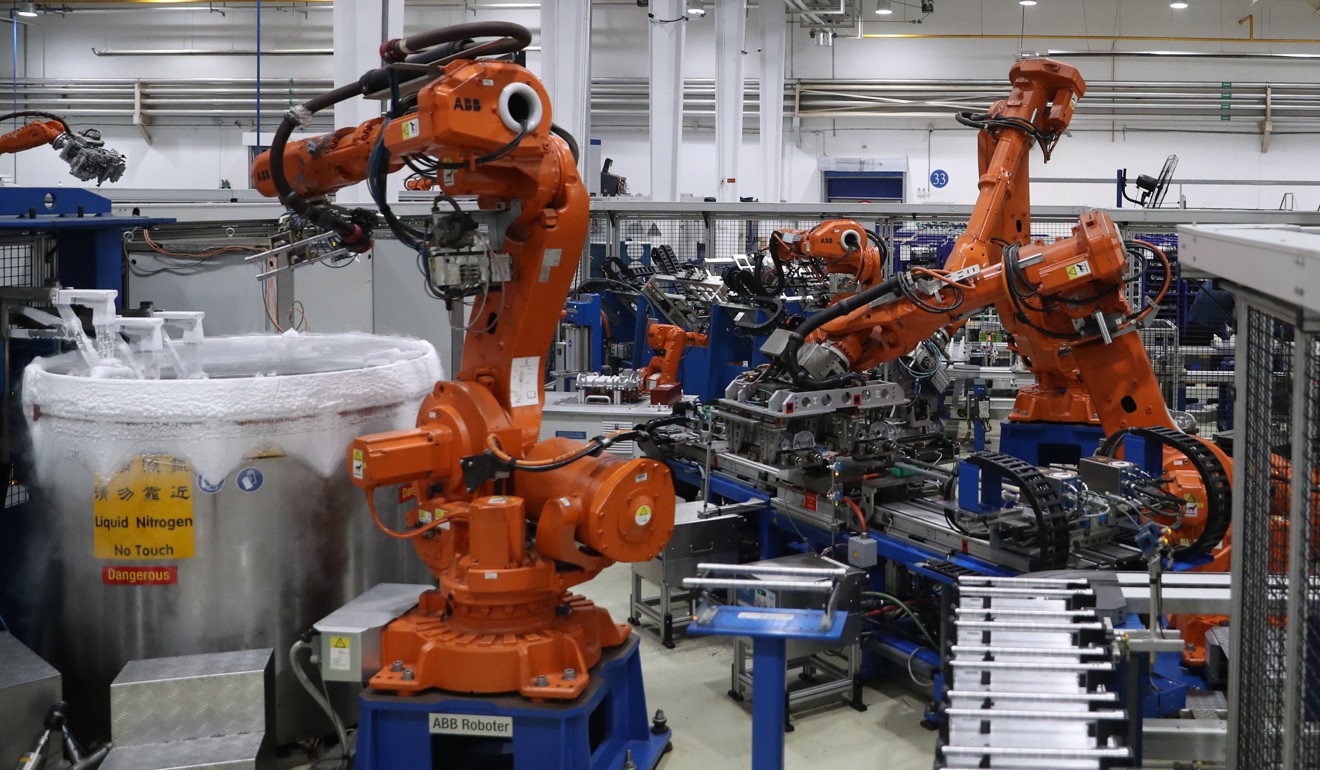
Beijing’s controversial ‘Made in China 2025’ plan is a linchpin of Northeastern rust belt’s future
- Liaoning province, the rust belt’s biggest economy, is pinning its hopes on the industrial strategy to use technology to transform its lumbering industries
- The plan which uses government subsidies to help firms cut reliance on foreign technology and imports has become a political flashpoint for the US-China trade war
While Beijing may be keeping its controversial “Made in China 2025” industrial strategy away from public discussion, the state-driven plan to lift Chinese manufacturing up the value chain is the bedrock of economic revitalisation in Liaoning, one of the three provinces of China's Northeastern rust belt.
The four-year-old plan that aims to wean China off its reliance on foreign technology and imports, and build global hi-tech champions, has become a political flashpoint for the US-China trade war.
Beijing’s pledge to subsidise state-owned enterprises (SOEs) and acquire intellectual property to turn China into a tech superpower at the expense of US and foreign firms are among the issues that have obstructed progress in the trade negotiations between the world’s two biggest economies.
But even as the central government has downplayed those intentions in the past year and emphasised the importance of cooperating with foreign investors to develop advanced technologies, Liaoning has held on to Made in China 2025 as the blueprint for transforming inefficient SOEs – predominantly in traditional heavy industries such as ship building, steel making and coal mining – into companies that can not only dominate the domestic market but also global competition.

The showcase of that effort is the Sino-German Hi-tech Park in Liaoning’s capital city of Shenyang .
“The park is a pilot zone for cooperation between Made in China 2025 and ‘Germany’s Industry 4.0’ [own national industrial plan]. By 2025, the park will be upgraded to world-class research & development, design, production and service centres in one of China's major industrial agglomerations,” said the park’s website.
“The focus of the park is on the development of smart manufacturing, high-end equipment, automotive engineering, and industrial services, and brings together a number of well-known equipment manufacturers of German and European medium-sized companies and industry leaders.”
The development of the Sino German Hi-Tech Park was a clear demonstration Liaoning’s effort to move up the value chain, said Shen Shiying, deputy director general at Liaoning Provincial Department of Industry and Information Technology.

“In particular, we want to match Germany’s standards,” Shen said.
If Liaoning stays true to the Made in China 2025 strategy, it would entail not just adopting cutting edge technology in manufacturing, but more critically, core technologies that are indigenously developed and owned. Available information on progress is minimal and vague, although local economic growth has accelerated modestly recently.
Gross domestic product growth in Liaoning climbed 5.8 per cent in the first half of the year. Although it failed to meet the politically sensitive 6 per cent mark and lagged the national rate of 6.3 per cent, the increase was a marginal improvement from the 5.6 per cent rise for the first half of 2018.
The province’s industry and information technology department’s Shen conceded that insufficient foreign and private sector investment have hampered the effort to move Liaoning’s existing industries to the next level of advanced manufacturing.
“Equipment manufacturing is a very important industry to our province,” said Shen. “While our foundation is solid for historical reasons, our plants are ageing. There are several problems in our industry development. The proportion of traditional industries [to all industries] is relatively large. Our industries are concentrated in natural resources and heavy chemicals. The task to adjust our industrial structure is a big one.”
Also impeding the province’s struggle to upgrade manufacturing and build a hi-tech sector is waning demand for Made in Liaoning products, which limits the demand for goods from new industries that are needed to draw investments from private and foreign players.
But Shen stressed that the business environment is evolving, as officials were “changing our mindset [in developing our industries], getting away from relying on the old ways of development”.
Despite the escalating trade and tech war as well as risks of economic and technological decoupling between China and the US, Liaoning has clinched investments from Germany’s BMW and France’s Renault to participate in local joint ventures to boost the province’s automobile industry.
For now, the widespread use of foreign technology is evident in a number of factories in Liaoning.
In an auto manufacturing plant in Dalian city owned by Japan’s Nissan Motor and its China partner Dongfeng Motor, an industrial robot designed by Swiss-based ABB is mounting tyres on a sport utility vehicle (SUV).
In the Shenyang exhibition room of Siasun Robot and Automation, the Chinese robotic company owed by the Chinese Academy of Sciences, a robot on display that assembles small components is powered by a processor made by US semiconductor firm Intel.
While our foundation is solid because of historical reasons, our plants are ageing
Automation in such ventures is a key development goal outlined in the Made in China 2025 plan.
“In mobile robotics, the technology developed in-house has reached 80 per cent, “said Wang Yupeng, vice-president at Siasun’s mobile robotics, one of Siasun’s top products for its home market, adding that the company sourced the remaining 20 per cent, like servo motors, an electrical device widely used in robotics, from suppliers across the globe.
A spokeswoman for Siasun said that the trade war’s impact on the company’s exports was small because the company’s main focus was on the domestic market. She declined to comment on how much it would affect the company if the US restricts its supplies of computer chips to China.
Among the US concerns over the Made in China 2025 plan is the amount of subsidies the Chinese government at all levels provides to hi-tech startups so that they can compete with rival US companies.
But even with unlimited support from the government, it doesn’t mean a company will be able to produce quality products with competitive pricing and services, according to Wei Xufeng, vice-president of the state-owned Dalian Huarui Heavy Industry Group, a key manufacturer of the world’s largest single-dish radio telescope.
“It doesn’t matter if you have all the government support,” said Wei. “It’s really up to the standard of your products. These days it’s driven by the market.”

